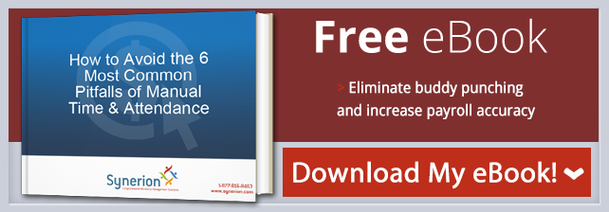 While absences happen, absenteeism is associated with a lot of negative outcomes that management should aim to avoid. Productivity, customer satisfaction, and company goals can all be affected when employees aren't at their desk for the time they are scheduled. If you aren't concerned with staff absences, consider these five ways absenteeism is negatively impacting your business.
While absences happen, absenteeism is associated with a lot of negative outcomes that management should aim to avoid. Productivity, customer satisfaction, and company goals can all be affected when employees aren't at their desk for the time they are scheduled. If you aren't concerned with staff absences, consider these five ways absenteeism is negatively impacting your business.
Monetary Cost
Absenteeism has a very real cost. It's been conservatively estimated that absenteeism costs $2,650 per salaried employee annually and $3,600 per hourly employee annually. Even if you run a small business, this cost can quickly add up, making up to 4% of total annual payroll expenses. While some absences are unavoidable, unscheduled, frequent, and tardy absences can all add up to a serious cost to employees. Staff absences, whether they be a scheduled afternoon off or a unscheduled late start to the morning, cost businesses cold hard cash, which impacts your bottom line.
Poor Customer Service
When you go to call a vendor, you expect a certain level of service. If you have a contact person, you call them and expect a prompt call back. If you call a customer service line, you expect whoever answers the phone to be able to answer your questions. When staff absences occur, customer service often goes by the wayside. Customers can't get in contact with their specific representative or they get their call answered by a part-time or per diem employee who can't immediately address their concerns. This leaves customers frustrated and can potentially lead to lost business. Staff absences can directly leave customer questions unanswered and problems unaddressed which costs your business money.
Lost Productivity
Regardless of the skill and training of your part-time or per diem employees, full-time employees are the lifeblood of a business. They know the process, know the customers, and know their job. When an employee has an absence, that leaves a gap that simply can't be filled and productivity suffers because of it. When calculating the cost of staff absences, the loss of productivity needs to be factored into the equation, even if those absences are mitigated with other employees.
Increased Staffing
It's estimated that employers who schedule weekend hours overstaff those hours by up to 13 percent to make up for staff absences. Over the course of a year, that can add up, particularly when shifts are consistently overstaffed. Overstaffing increases payroll costs and can negatively impact your company's ability to grow and change.
Decreased Employee Engagement
It's not just company profitability that is impacted by staff absences. It's also the overall morale of your workforce. When employees are unreliable and unable to perform their job duties, it creates stress and strain on their co-workers. Teams can't meet and make progress because key players are missing, employees need to wait for other employees to report to work and provide answers or documentation, and work is halted when employees take unscheduled time off. The inability to perform their work because of other employees' absences negatively impacts employee engagement and morale.
It's impossible to stop absenteeism, but reducing it is achievable with some safeguards. A clear attendance policy, integrative time and attendance software, and a strong message from management to employees regarding attendance can all significantly reduce the costs associated with staff absences. If you think staff absences aren't seriously negatively impacting your bottom line, consider how the five effects of absenteeism discussed in this blog are impacting your business.
